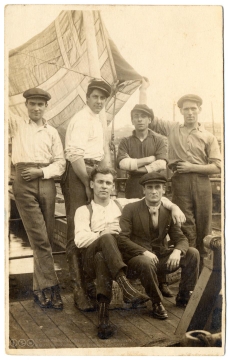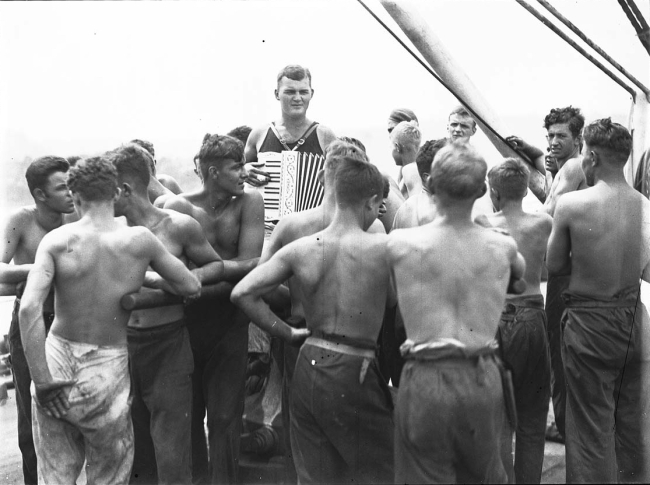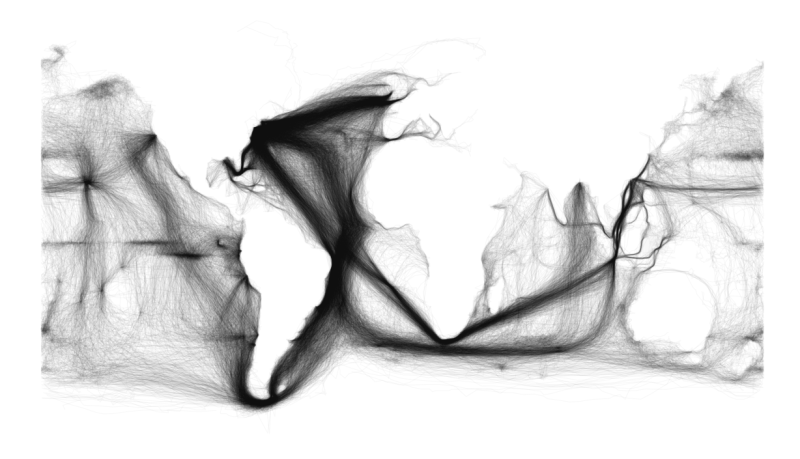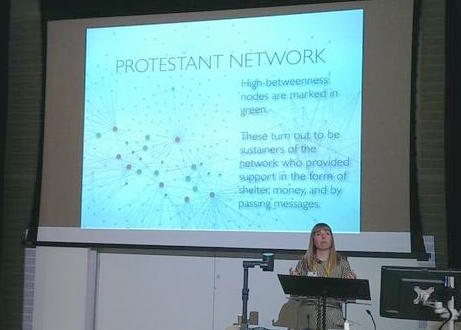Recently Times Higher Education published an article by Allan Johnson about the six questions every academic dreads to hear at conferences, which started an interesting discussion among a group of historians on twitter about the kind of conference questions we really like to hear. Joanne Bailey, Reader in HIstory at Oxford Brookes University, suggested this would make a great topic for an article and took the lead in turning the twitter discussion into something more coherent, and it gives me great pleasure to post the resulting article here.
The six best conference questions: Or, how not to paper-bomb at a conference
By Joanne Bailey, Isaac Land, Lorna M. Campbell and Steven Gray
Giving a conference paper can be a daunting and sometimes even an unpleasant experience, as Allan Johnson reminded us in his article in the Times Higher about the six conference questions every academic hears, and wishes they didn’t. They range from the helpful, to the ambush, to the direct attack. There are the well-intentioned, if condescending offerings: the ‘Courtesy Question’ and ‘The Tell-Us-What-You-Want Question.’ Then there are the conference versions of photo-bombing: ‘Talk-To-Me-Personally Question’ and ‘Wandering Statement’ where the questioner sticks their research in front of the speaker’s. Finally, the argumentative: ‘Obstinate Question’ and ‘Display of Superior Knowledge’.
Well, we’ve all been there, possibly on both sides of the desk. Some of us even avoid giving papers to escape these questions. One of us remembers the joy she felt at a conference when the fire-alarm went off as she finished the paper, which avoided questions altogether. But of course we need other researchers’ questions to make our research efforts worthwhile. Their questions are the life-blood of conferences. That is why we give papers. We want to test our direction, our findings, and our approach. By the way, if you go to a conference in order to monitor the competition rather than to survey the field, we suggest you should save your money as that kind of attitude is unlikely to be helpful to you or anyone else.
So in the ideal world what should conference Q&A sessions be like? A short survey on Twitter asking academics what kind of questions they’d benefited from after delivering conference papers came up with several horror stories but – more importantly – the sort of interaction and enquiries we want and need when we bravely set our work in front of others.
The supportive Question
Okay, sometimes the audience is silent because of its state of exhaustion, hangovers, desire to have lunch, or need to get the train. So for the kindly soul who breaks the ice, we like questions which show that the audience member has actually listened to our presentation, so ask about a specific point that was raised. It can be robust: ask for clarification as that actually gets the speaker to engage and explain; particularly useful for researchers at the start of a project.
The Selfless Question
When you give a conference paper you want the questions to be about your paper or aspects of your research. So the questioner who focuses on your research is more helpful than the one who dwells on their own work. It means the panel member can think about their own research and not get distracted by trying to guess who the speaker is from the clues in the question, or if they already know who the speaker is, trying to (a) avoid offending them, or (b) offend them. For the egotist academics out there, why not see your questions as an opportunity to publicly help others? They’ll be eternally grateful!
Another way to do this is to try to ask questions about more than one paper. This makes the conversation a three-way discussion between the questioner, the speakers and the audience. We can all learn something then.
The Tough-but-Fair Question
This is probably the most rewarding question. Tough makes us explain and clarify. It can turn our research around. One PhD student advocates the kind of questions which ‘point out the holes and inconsistencies in my arguments/proof, or extrapolate off my argument and then poke holes. I find those questions to be really useful, because they show me where I need to do more work, especially at expressing my ideas’. But, the question must be fair. Try something like: ‘You mentioned your (evidence type) which poses problems, can you say a few words about the solution?’ Or how about offering the speaker an exception to their case and ask them to reflect on it?
The Practical Recommendation
Everybody loves this question. We need to know what we have missed in the primary and secondary sources, but phrase it positively please! Don’t demand to know why the speaker has omitted classic work a, b, or c. Try: ‘Have you consulted such and such because it reinforces your argument?’ Or, admit that there isn’t a reason for the speaker to have looked at this, but tell them it is similar.
The Think-Outside-the-Box Prompt
Another popular question is one which gets the speaker to think outside the box in which they have neatly confined their research. Remember this is not an attack, nor should it be about the questioner’s own work. Simply ask the speaker to think about a specific comparative case, or comment that their findings may be reflected in other fields or time periods. Not only does this challenge pre-conceptions in a useful way, it may help speakers to think about expanding their work in new directions. This should be exciting rather than threatening. One medievalist offered a question that had helped them: ‘You were talking about women in England, I know that in Germany at the time this was happening, is that the same?’
The Tell-Me-What-Else-You Know
We all cut loads out of our papers. Very often, speakers comment on this while delivering the paper, partly because we are so desperate to point out that we haven’t missed something obvious, we just haven’t had time to cover it. So ask the speaker about the areas they had to leave out! Useful questions, like: ‘You mentioned that time did not permit you to go into XYZ. Can you elaborate now? Speakers appreciate the chance to flesh out details and demonstrate the depth of their research.
When academics give conference papers we don’t necessarily want everyone to agree with us and praise us, though admittedly that can be nice. What we seek is for our audience to take us seriously, whatever stage of our careers we are at. And that means not dismissing speakers because they are at an early stage of their research and have not yet read the ‘seminal’ work. As one well-established academic observes: ‘Never greet a young scholar’s paper with “that’s not where the field IS,” which is self-evidently incorrect’. Similarly, those of us at the other end of the academic life-course need to be challenged by ‘new’ approaches and techniques. Early-career scholars can offer so much here, even if they might feel vulnerable about questioning more senior academics. Try phrasing questions along the lines of: ‘How do you respond to (specific scholar) when they say (specifically X)’, rather than dismissing them with ‘You are out of touch’.
What emerged from the Twitter survey is that we give papers in order to think things through and to learn. Audience members are at the panel for the same reasons. This puts us on the same team, not on opposing sides, even when we hold alternative views! So questions should be about personal and collective development, not scoring points off the captive speaker. Next time you ask a question in a conference be a giver, not just a taker. Learn, but offer your learning too, so that it is helpful rather than confrontational.
What academic speakers need and want is simple: courtesy, civility, and interest. Rephrase your ‘Obstinate Question’ into a ‘Tough-but-Fair’ question that allows the speaker to think and respond. Turn your ‘Wandering Statement’ into a ‘Practical Recommendation.’ If you are desperate to fill a silence, make the ‘Courtesy’ question a ‘Supportive’ one, or help out constructively with a ‘Tell-Me-What-Else-You-Know’. We all like to talk about our own work, but recognise that you aren’t giving a paper, so make ‘Another Place-or-Time-Prompt’ which introduces your interest but asks a question of the speaker, encouraging them to think beyond their chronological or spatial boundaries. Be brief, be focused, be answerable, and respond to something specific in the actual paper.
There is, perhaps, a seventh type of conference question that deserves consideration here. What to say when the disagreement is genuine and large, so large that downplaying it would be an injustice to your own intelligence and the speaker’s? Consider that civility is more important in this situation than in any other. It may be helpful to frame your comment as a request for clarification (“are you arguing that…” or “perhaps I misunderstood, but…”). Even if you heard the argument correctly, you are offering them an opportunity to introduce nuances or climb down altogether from an untenable position. If you back a speaker into a corner with an accusation, they are likely to respond in a purely defensive spirit.
A good rule for the statement of strong disagreement is to keep it brief. Jane Austen said it best: try ‘… to unite civility and truth in a few short sentences.’ You can register your dissent and the reasoning behind it without taking up so much time (or unleashing such strong emotions) that others in the room cannot go on to engage with the speaker on their own terms in the remainder of the Q&A. If the reasoning behind your point is widely shared in the room, you won’t need to belabour it; if it is not widely shared, a lengthy intervention will not win you many converts. Remember that you can discuss the issues with the speaker after the session.
A practical problem remains unexamined: How should a speaker respond when faced with a question that feels inappropriate or hostile? We should bear in mind that people have different natural styles and levels of social skill, and a bluntly worded question is not necessarily a malicious one. Audience members have little time to prepare their questions. It may be helpful to respond in a tone and style that is slightly friendlier than the questioner’s. In some cases, this is all that is required to smooth the waters and enable dialogue. Avoid the temptation to shrug off the challenge with a minimalist reply, ask for clarification if needed, for instance. Honesty is disarming: ‘that is very interesting, but there really isn’t enough time to expand the scope of my work in that direction.’ Do consider that one source of belligerent audiences and long-winded questions may be past history with speakers who came across as dismissive.
We should also be sensitive to the ways that acerbic questioners may be imitating aspects of their own rough treatment at the hands of (anonymous) peer reviewers or (named) book reviewers. We cannot expect a Rivendell of civility at conferences to last for long if the trolls have taken over elsewhere.
Useful Links
Six conference questions every academic hears by Allan Johnson
How not to ask questions at a conference by Kevin Burke
How to disagree with civility by Lincoln Mullen
The Authors
Joanne Bailey is a Reader in HIstory at Oxford Brookes University where she a historian of early modern, Georgian and Victorian Britain, with particular interests in marriage, marriage breakdown, family relationships, the domestic economy, parenting, masculinities and identities. Joanne blogs at Joanne Bailey Muses on History.
Isaac Land is an Associate Professor in the Department of History at Indiana State University where his teaching and research interests focus on the intersection of national and international histories, and the history of sailors and port cities.
Lorna M Campbell is the Assistant Director of the Centre for Educational Technology, Interoperability and Standards at the University of Bolton. Along with her colleague Heather Noel-Smith, she is also undertaking an independent research project on the the careers of young officers in the Napoleonic navy. Lorna blogs at Open World and Indefatigable1797.
Steven Gray is undertaking a PhD at Warwick University with the working title ‘Imperial Coaling: Steam-power, the Royal Navy and British Imperial Coaling stations circa. 1870-1914’. Steven’s research concerns the expansion of a steam-powered Royal Navy in the second half of the nineteenth century and the wider ramifications across the British empire. Stephen blogs at sjgray.blogspot.co.uk.



 Today is
Today is 






